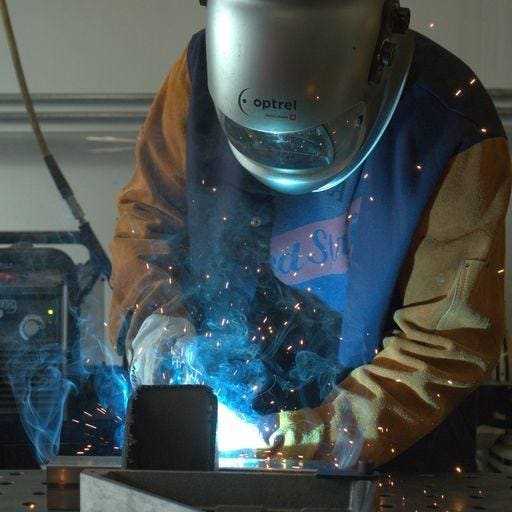Tony Pan came to the United States from Taiwan in 2004 to study physics at Stanford University before getting his Ph.D. in the same subject area from Harvard University. Now, the 37-year-old is the chief executive of Washington State-based Modern Hydrogen, making energy cleaner and cheaper with a formula endorsed by a former U.S. energy secretary and Microsoft Founder Bill Gates.
We’ll get into that in a moment. But utilities have invested in and bought the technology — a potentially humongous market in the pilot phase. The chief executive says it will go commercial in 2025 and gradually scale up.
“Right now, it is like Tesla
TSLA
The company, founded in 2015, has raised $100 million from the Gates Frontier, NextEra Energy
NEE
It uses methane pyrolysis to decarbonize natural gas, which is abundant and cheap in the United States. That process splits the hydrogen and the carbon. In other words, natural gas is 80% hydrogen, and the focus is on removing the one pesky carbon atom. The technology heats natural gas to 1,000 degrees Celsius without oxygen.
That allows Modern Hydrogen to crack the natural gas and decarbonize it, thus isolating the carbon atom — not burning it and sending it to the atmosphere. That avoids 10 gigatons of CO2 yearly. Public and private enterprises have invested millions of dollars in this technology, which former Energy Secretary Ernest Moniz applauds. It’s called turquoise hydrogen because it mixes blue and green. Blue hydrogen occurs when the carbon is captured and buried, and green hydrogen refers to using wind or solar power to split water molecules into hydrogen and oxygen.
Importantly, Modern Hydrogen takes the isolated carbon — a substance that looks like chimney soot — and sells it to manufacturers. That means the technology does double duty, helping to justify the cost. Instead of combusting fuel and trying to capture and bury the CO2, the company has found a use for it in asphalt.
And How To Defray The Cost
Businesses in California, Oregon, Washington, Florida, and Canada have bought into it. And influencers are attracted.
“Repurposing something that contributes to holes in our atmosphere to fill the holes in our streets. That’s impressive to me!” remarked Theo Von about Modern Hydrogen. Von is a renowned TV and TikTok star, podcaster, and comedian, who drives his massive audience to learn more about topics he cares about, such as climate change, through his episodes, such as this one with Neil deGrasse Tyson, which alone has 4.8 million views.
Notably, the carbon is now an asset and not waste — something that is burned and potentially buried. Indeed, gases are hard to collect, transport, and permanently put underground. Manufacturers can now sequester the carbon in the asphalt.
Road Recyclers is an asphalt products manufacturer with significant contracts for bagged asphalt patches in New Mexico and the largest counties in Texas, going through many tons of material every month. The chief executive of Road Recyclers, Shane McDade, explains his eagerness to incorporate carbon stripped from natural gas in their roads in the Southwest:
We “have the potential to produce something pretty rare — a road material that is not only environmentally sound but also of a higher quality and more cost-effective than regular asphalt products,” he told me. Field trials with public partners such as transportation departments will come later this year.
But the company is called Modern Hydrogen and not Modern Carbon. While it cracks natural gas into hydrogen and carbon, the primary focus is on producing clean hydrogen for the hard-to-decarbonize industrials or things that cannot quickly electrify. That applies to planes, trains, ships, and long-haul trucks. Electric generators can also run on a blend of hydrogen and natural gas.
And The Infrastructure?
The advantages of hydrogen are that it is abundant, renewable, and non-polluting. However, it isn’t easy to store that fuel, and it is about 30% more expensive to move it via pipelines than it is to carry natural gas.
Consider: There are 3 million miles of natural gas pipelines and less than 2,000 miles of hydrogen pipelines. The natural gas lines will require “substantial modifications” to carry pure hydrogen, the U.S. Energy Department said.
However, “We don’t need any changes to the pipelines because we do the conversion of natural gas to clean hydrogen at the point-of-use,” says CEO Pan. “Thus, the hydrogen is produced locally at the customer location, and therefore no longer needs dedicated hydrogen transportation infrastructure. The utilities want to put our box near or at the end of their existing pipelines — next to the customer.”
Hydrogen can potentially revolutionize energy production for electricity and transportation — a response to spiking oil prices and the escalating climate crisis. Modern Hydrogen is promising. It decarbonizes natural gas and uses carbon to produce asphalt, defraying costs and creating more demand for the technology.
Utilities are the main prospects, serving residential customers and industrial users that consume a lot of power. Electricity generation accounts for 25% of CO2 releases in the United States and about 30% globally.
Suppose power companies speed up the energy transition and use more hydrogen. They could avert a climate breakdown — a nod to Tony Pan and his company’s work.
Read the full article here





